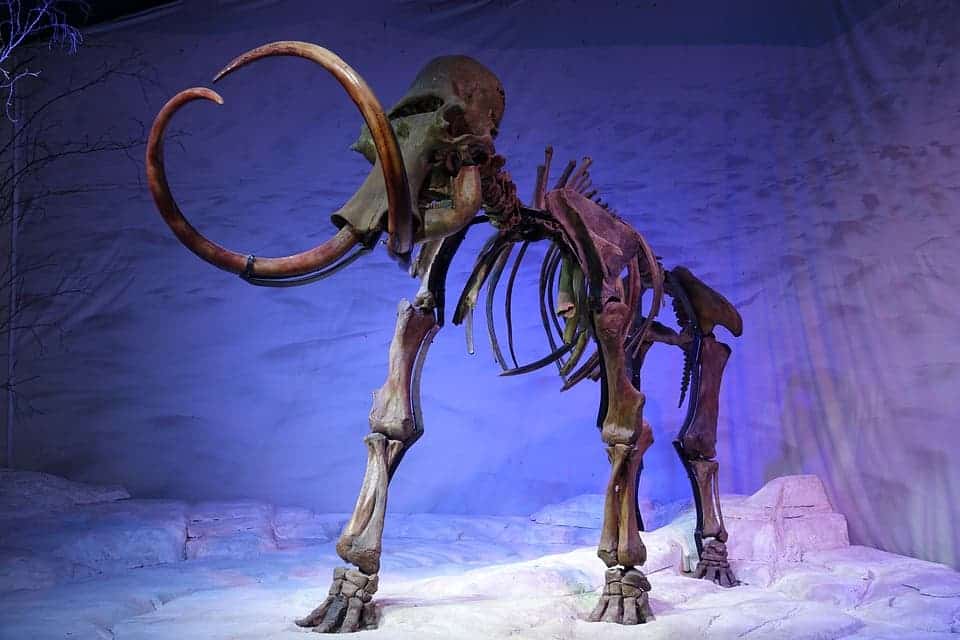The spread of prehistoric humans across the world had a twofold effect that drove mega-herbivores extinct, new research reports. Our ancestors thinned the herds through hunting but also took over part of their ecosystem functions, undermining the species’ viability. However, this ecological shift was imperfect and left deficits in many areas — suggesting that the reintroduction of large animals in certain parts of the world could have a positive effect on local environments.
There are very few animal species today that grow to be one ton or more — like elephants, hippos, and the rhinoceros. Also known as mega-herbivores, this class of animal species came very close to complete extinction around 12,000 years ago — even those that are alive to this day boast limited populations.
A new paper published by Hervé Bocherens, from the Senckenberg Research Center for Human Evolution and Palaeoenvironment, analyzed this process and found that humans are to blame for the extinction of these terrestrial giants.
“Under geological aspects, the small number of so few large animal species presents an anomaly,” explains Dr. Bocherens. “The most prominent example of prehistoric giants is, of course, the dinosaurs.”
Dinosaurs moved off the stage after a particularly bad encounter with a meteorite, but a lot of other mega-herbivore species evolved in more recent geological history, such as giant sloths, wooly rhinos, and mammoths. Dr. Bocherens specifically looked at what pushed these species to extinction around 12,000 years ago and what consequences that had for the environment.
He reports that — much like modern-day elephants, for example — these behemoth species acted as ‘ecosystem engineers’. They kept tree cover in check through grazing, which in turn allowed lower plants more room and light to thrive. The reduced tree cover also meant more open landscape and clear watering holes, both of vital importance for other animals. Bocherens further explains that mega-herbivores also helped spread plant species over large distances by carrying them in their digestive tracts.
Big herbivores, big changes
Between 45,000 and 12,000 years ago, a part of these tasks was inadvertently taken over by modern humans. The gradual spread of mankind across Eurasia, the Americas, and Australia roughly coincides with the gradual extinction of giant herbivores across these continents. With the Neolithic revolution, the functions these ecosystem engineers performed were partially replaced by the practices of agriculture, animal husbandry, and those related to humanity’s more sessile lifestyle.
There were certain areas, however, that didn’t fully undergo this change. One example is the Subarctic: it lost its giant herbivores (such as mammoths), but because its harsh climate made it both uncomfortable to settle, as well as ill-suited for agriculture, humans never truly moved in. Bocherens reports that the gap these giant species left in the ecosystem impacted the entirety of the flora. They had kept trees in check, giving other plants room and nutrients to grow, which in turn had a positive effect on overall biodiversity. Since humans pushed these species to extinction but didn’t move in to take their ecological niche, there wasn’t anyone around to maintain the ecosystem services these species performed — as such, the once-steppes turned into thick, boreal, coniferous forests
In time, this reduced the planet’s albedo effect. The dark green color of these forests reflected much less of incoming sunlight than the steppes’ winter white or the yellow colors of its dry grasses during the rest of the year. Overall, this led to a slight warming of the climate. The soils in these areas also changed, Bocherens notes, as they used to be much drier and emitted less methane (they had less biomass mixed in) during the days of the mammoths. The extra greenhouse gases went on to contribute to climatic shifts.
“The presence of giant herbivores thus not only contributed to a higher species diversity, it also had an effect on the global climate,” he concludes in his paper.
“In some areas of the world, it may even make sense to reintroduce such mega-herbivores in order to increase biodiversity, thereby avoiding global warming.”
Bocherens thinks the extinction of mega-herbivores could teach us a lot about the changes we’re causing in ecosystems today. Understanding both the differences and similarities between the two processes could help us better predict changes in natural systems.
The paper “The Rise of the Anthroposphere since 50,000 Years: An Ecological Replacement of Megaherbivores by Humans in Terrestrial Ecosystems?” has been published in the journal Frontiers in Ecology and Evolution.










